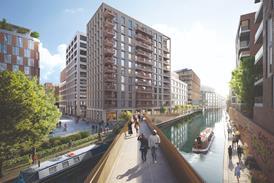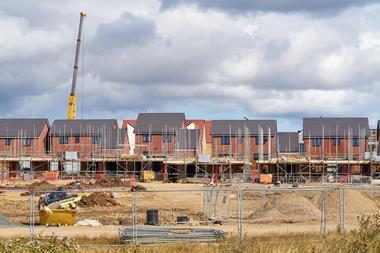The longest and arguably most interventionist demand-side state-sponsored housing policy since the Right to Buy has come to a final end, bringing the curtain down on its 10th anniversary.

Unsurprisingly the announcement has been met with a sea of differing views. Fair arguments have been made on both sides and do not need repeating. Debates such as these are not simply black or white; instead every action has a trade-off, and that is absolutely the case with Help to Buy.
All I can speak for is the experience I’ve had during this time and the personal stories I’ve witnessed of Pocket buyers who would have otherwise been unable to afford a home. During the time it was operational, we sold almost 70% of our homes in this manner, helping bring the average deposit down by almost half. Of those who purchased, 40% were key workers. One example is Kezia who brought a home at our West Green Place development in Haringey. She was one of 375,000 people who benefited from the initiative across the country.
Labour recently released its research on home ownership, highlighting that a child born this year has less than a one in three chance of being a homeowner by the age of 50. Where will the future bank of mum and dad be, if they themselves cannot get on the housing ladder?
The obvious response to these headlines is to find a solution. Instead in 2023, the current government has cut two major housing initiatives in as many months, with little sign of alternatives.
Whether its demand side or supply side, the sector needs to come together and provide solutions to help the government deliver on its promise to build more homes. Solving the blockers in the system must be bottom up not top down, from those on the ground experiencing the difficulties of delivering homes every day.
One such difficulty is the planning system. Whether an SME or a large developer, we are all exposed to the complexities of this beast. According to the Home Builders Federation, 94% of developers believe planning difficulties represent the major barrier to housing delivery. Unfortunately, however, those most exposed to this are the little guys, those crucial to a diverse sector.
Over the last 12 months, we have been working tirelessly to change this. Through our Small Sites Planning Policy, which seeks to streamline the delivery of small sites, the country could deliver an extra 1.6 million new homes, while also helping support an SME sector that is on its knees.
Recently Baroness Thornhill, Lib Dem spokesperson in the House of Lords, put forward our Small Sites Planning Policy within the latest Levelling-up and Regeneration Bill debate. In doing so, she received widespread support from both sides of the chamber.
This is something designed by industry for industry and has the backing of almost 50 organisations including Barratt Homes, the National Housing Federation, Optivo, G15, a range of SMEs and even specialised supported housing organisations.
What Thornhill and others recognise is that a healthy housing sector means a healthy nation and it is about time the government finds solutions that can solve this problem.
Marc Vlessing is chief executive at Pocket Living






























No comments yet